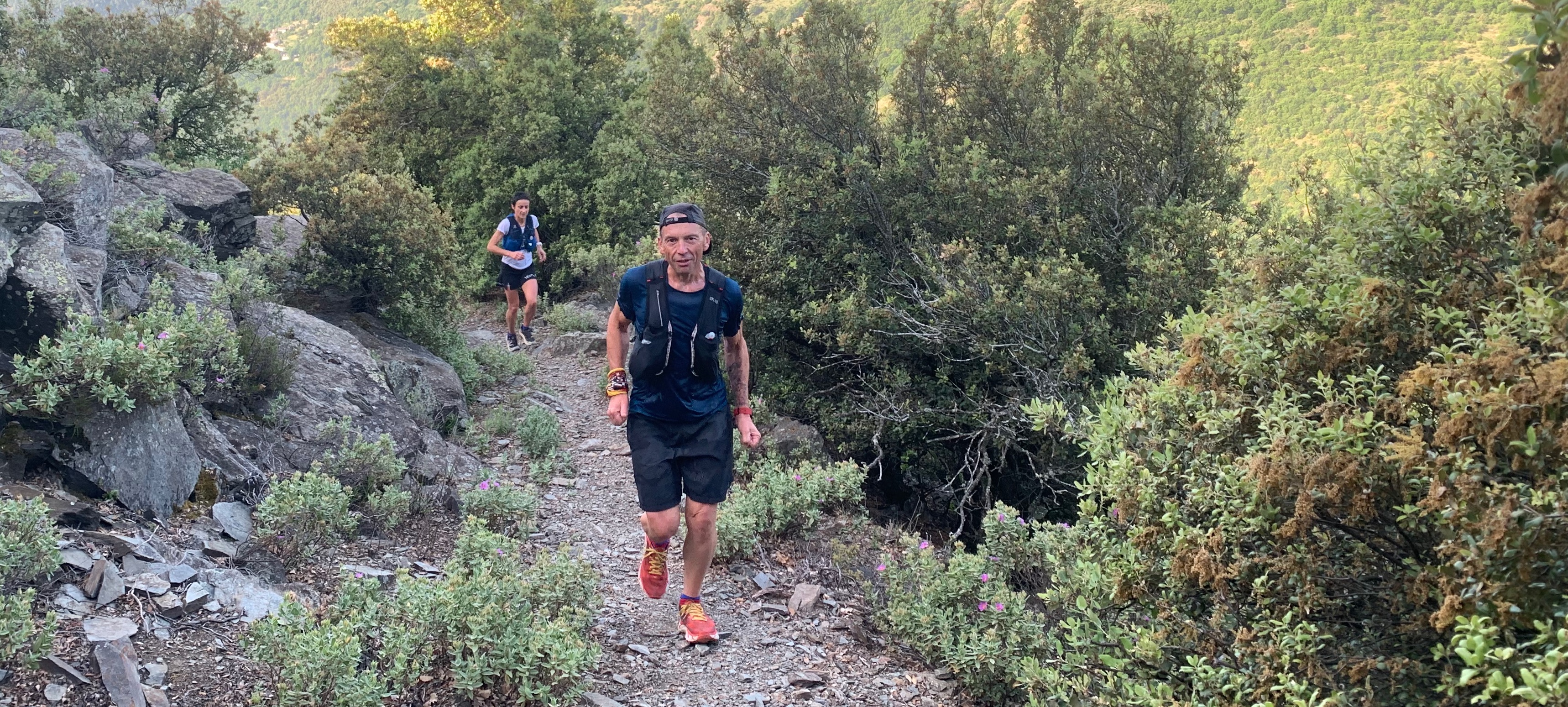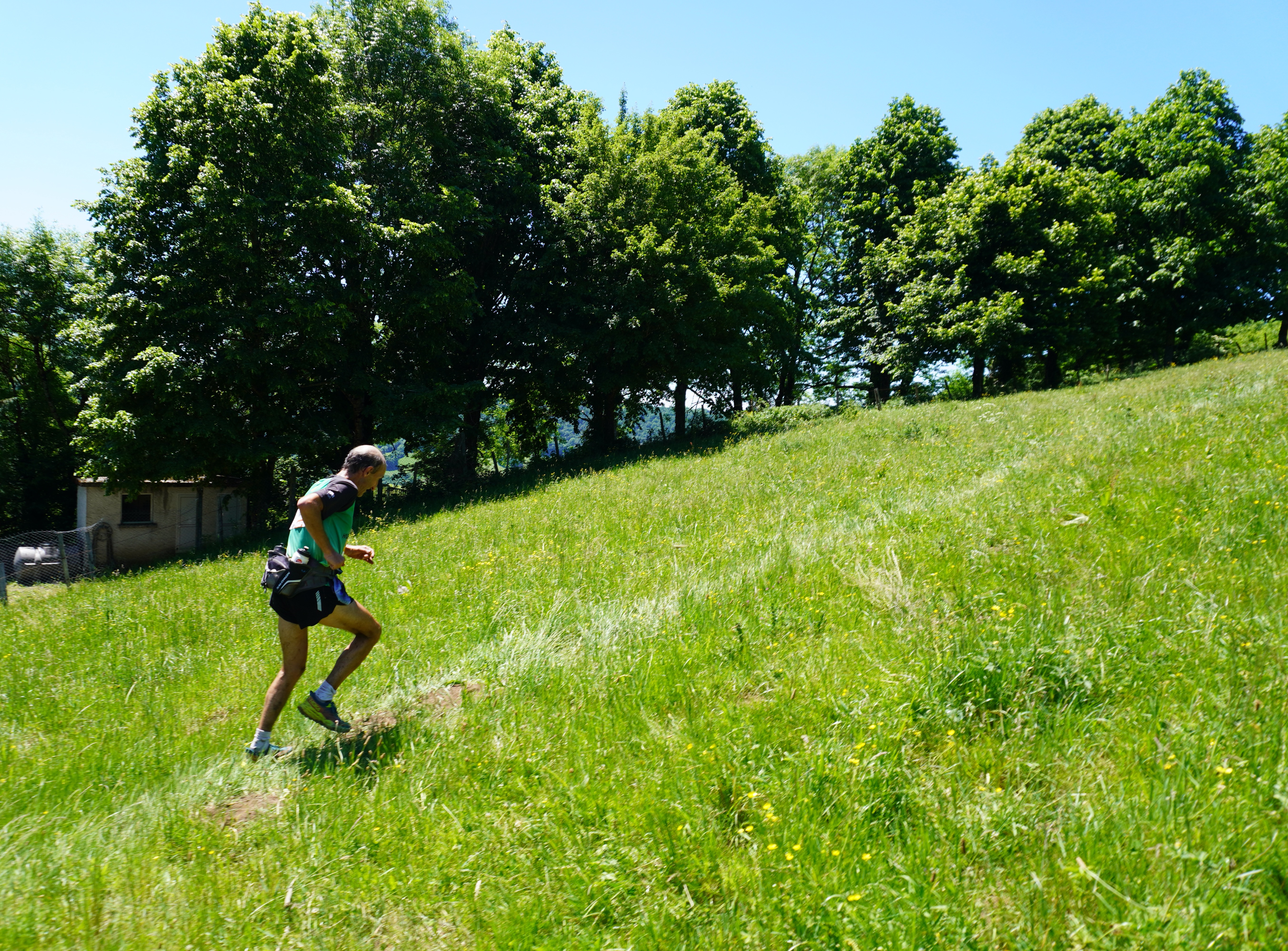My Top Five Running Hill Workouts

Running up hills is physically demanding and your ability to do so in trail races can make a massive difference to your performance. Here are my 5 favourite workouts that I like to give athletes who are looking to improve their climbing ability for races.
1. 30 Second Hill Repeats.
Aim: to increase up hill running power and strength.
Description: Find a hill with a decent gradient but one that you can run fast up for about 30 seconds. You need a good surface so that you can focus just on running (road or piste/fire track is fine). After a good warm up including some faster paced running/strides Repeat 3 times
5 x uphill running hard for 30s; jog down to the beginning to recover.
Take 3 to 5 minutes between sets.
Notes: focus on good running form - leaning in to the hill from the foot not the waste, so that you are parallel with the hill. Drive your arms and legs, allowing your foot to drop slightly as you land, but do not let your heel touch the floor, to maximise the spring reflex of your calf muscles; push off from the ball of your foot. Despite the lean stand tall and maintain good running form.
This is a great session to do in winter when it can be difficult to get high without meeting snow. It's great for building some uphill running power and works well in the base period of training. As a short session you can do this as a lunchtime run.
Progression: you can increase the number of reps per set by one or two week on week.
Variation: if you are new to running, or do not feel you could manage 3 sets of 5, you could start with one set of 8-10 repeats and progress gradually to two sets of 8 repeats.
2. Aerobic Threshold Hill Climb
Aim: to increase your uphill running efficiency and endurance; it will also help with race pacing.
Description: Find a long continuous climb on a relatively good runnable surface; it can be forest single track, road or piste so long as it's continuous and runnable for you at the desired intensity. After a decent warm up 10-15 minutes in zones 1 and 2 should suffice) run up the hill continuously for 30 minutes at or just above your aerobic threshold, this should feel like you are working but that you could continue for a long time (up to 90 minutes). The key is to stay below your lactate threshold.
Notes: This session is good for athletes training for an ultra event with a significant amount of climb in it. It's a great longer weekend session which I like to add as a Saturday long session before the Sunday endurance run to create some fatigue; if you do it too hard (at your lactate threshold) however it will cause too much fatigue. If you can find a more technical descent down the same hill this can be good practice for some technical descending on fatigued legs and on making the transition from up hill to down hill.
Progression: you can progress this week by week by increasing the uphill running time by 5-10 minutes depending on your ability, but to the full 90 minutes (if you have a hill big enough). The more you increase the running time the more you will see how pacing this session is important!
Variation: if you don't have access to a long climb you can do this session indoors on a stair climber, although typically it's hard to go for a really long time or find a hilly course and work the climbs in zone 3 and the descents at a relaxed pace aiming for the same total amount of climb over a number of smaller climbs.

3. Lactate Threshold Hill Repeats.
Aim: to increase speed endurance uphill and increase your fitness at around your lactate threshold; it will also help in pacing shorter races.
Description: find a continuous hill that you can run up for the duration of the session at the intensity required. After a good warm up including some running above your aerobic threshold and at around your lactate threshold repeat 2 times:
10 minutes at around your lactate threshold; this should feel hard but not all out, it's like controlled speed, so you will be able to speak but not in whole sentences.
3 minutes jog down to recover.
Notes: this is a good session for athletes looking to run races up to 1/2 marathon with a significant amount of climb. It can also be a good way for runners who have a tendency to injury to do some harder training with less injury risk.
Progression: there are an infinite number of ways to progress this session so that you can progress to an hour of running in zone. The simplest is to just keep adding a couple of minutes to the repeats, buy you can equally increase the number of repeats with good effect. I tend to progress the session in a way that I think will most benefit the athlete and in a way that they will find achievable, for example, two times 30 minutes is a really tough session and some athletes would not maintain the intensity for that long, so we might choose 4 by 15 minutes as a good alternative, to break the session up a bit. You can increase the density of this session by reducing the rest time.
Variations: if you struggle to find hills big enough to extend the length of the repeats, you can increase the number of repeats instead.
4. 5 Minute Hill Repeats
Aim: to increase uphill running power and strength; to increase fitness at around your VO2Max.
Description: Find a hill that you can sprint up for 5 minutes that is runnable (ski slopes in summer when the snow is melted can be perfect for this session). After a good warm up including some sprints/strides above your lactate threshold repeat 3 times:
5 minutes hard up hill
3 minutes jog recovery down.
Notes: This session can be a great sharpener for the final build period of a training plan in the weeks before a race; it's relatively short but hard, so is good if you are short on time. I would tend to give this to more experience athletes who are looking for a performance where they might wish to be able to race tactically (ie surge up a hill to catch/take a runner in front).
Progression: you can increase the number of reps in this session up to 5, after which, it would probably stop being VO2Max.
Variation: If 5 minutes per rep is too much to start you can achieve the same training effect with reps from 3 minutes in length. So if I know an athlete can't stay above their lactate threshold for 5 minutes then I would start off with 5 by 3 minutes of equal recoveries.

5. Downhill Practice.
Aim: To increase the skill at down hill running over progressively more technical terrain.
Description: find a short section of hill which is technically challenging, either on a loop of about 8-10 minutes or that you can jog/walk back up to recover. Repeat 10 times:
Walk/jog up/round to the top of the hill and run, getting faster with each repetition as you become more familiar with the descent. Depending on your ability and confidence this may mean walk down the first time and simply working out the best lines you can take; on the second and third you might try different lines until you find a line that you like and is efficient for you. Depending on your preference and the steepness of the descent aim to either lean forward into the hill so that each foot fall you are essentially breaking your fall, or sit back as though your were skiing. Either way use your arms for balance and take small light steps, adjust your line of vision with the technicality of the terrain (the more technical the closer to your feet you will look) but alway aim to plan at least two steps ahead. Aim to be able to run at pace down the hill at least 3 times before the end of the session.
`Notes: this is a good session for those who lose time on technical descents and is a good way to increase your skill and your confidence. Doing this with a partner/coach who can do the walk through with you can give you live feedback on technique and lines down will ensure you get much more out of the session.
Progression: choose longer descents as your confidence grows, concentration is a big part of being able to descend well over a long period of time.
Variation: You can incorporate a technical down hill session in a loop of around 10-12 minutes and do repetitions of the loop; this way you get to practise the transitions from up/flat to down and imitate the cumulative fatigue of a race. Ideally the down hill section would be towards the end of the loop.
I find a lot of descending is psychological and a good way to increase your mental skills is by visualisation, so after this session, visualising the hill and the lines down it and then visualising yourself running fast down it using those lines will help.
If you are looking to improve your climbing and descending it's a good idea to have a period of training focussed on just that. Hopefully these workouts will give you an idea, but if you would like a framework to help you plan your training why not try out the plan by clicking this link?
Additional Questions
How do I know which hill workout to use?
If you know you are particularly weak in one area rather than another then it's a good idea to focus on that area of your running in training; so if you know you have good endurance up hill, but that you lack the ability to make a surge and take runners in front when then focussing on the 5 minute uphill efforts might work best, however if you feel you have good short term power, but lack endurance then working on the aerobic threshold hill climb might work best for you.
How do I plan hill workouts into my training?
All the workouts described above are hard; they should count as a hard training session from which you will need one or two full days recovery in which you are doing very easy, shorter runs, although they can sometimes be planned before a long endurance run to form a two day block of training after which you would need two or three days recovery.
February 1, 2023

Comments